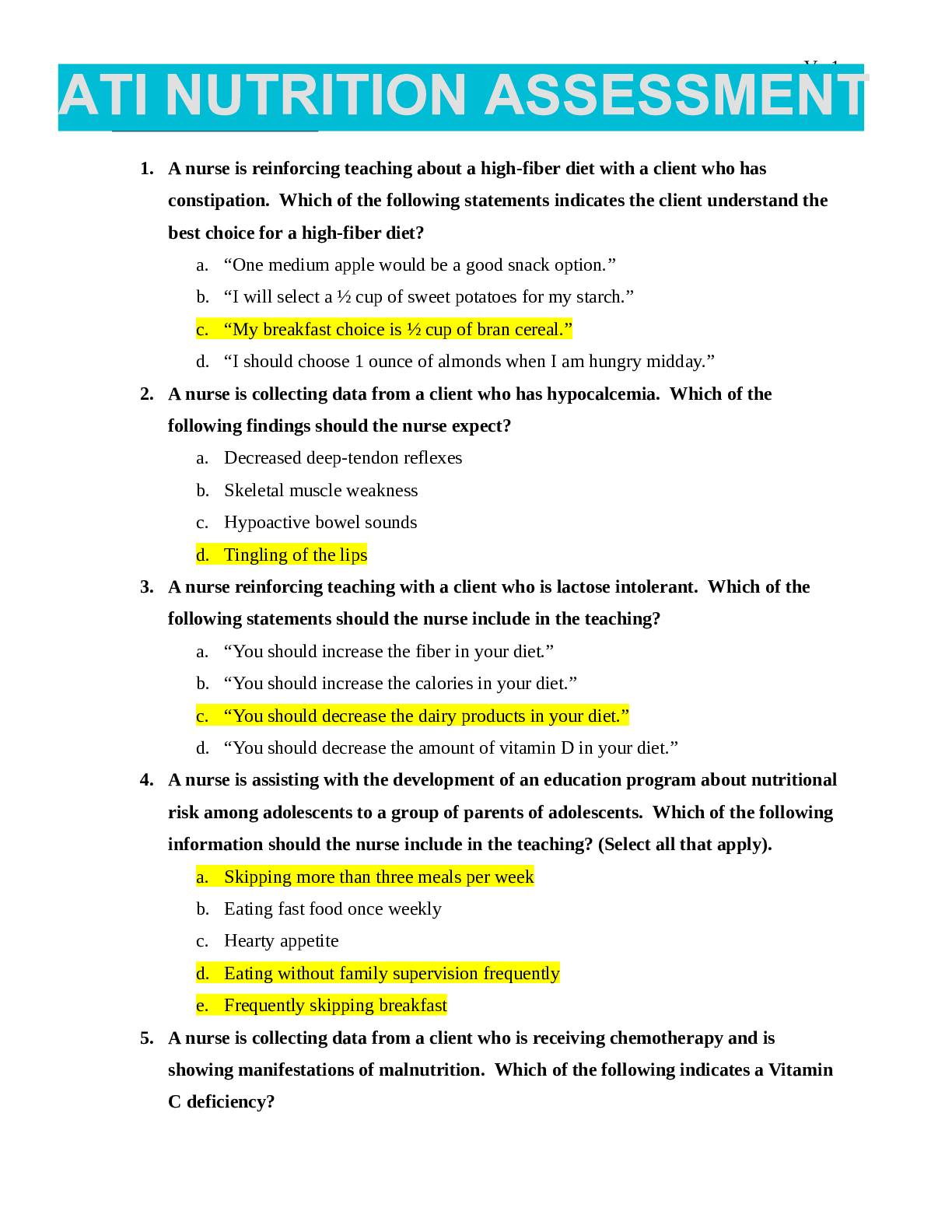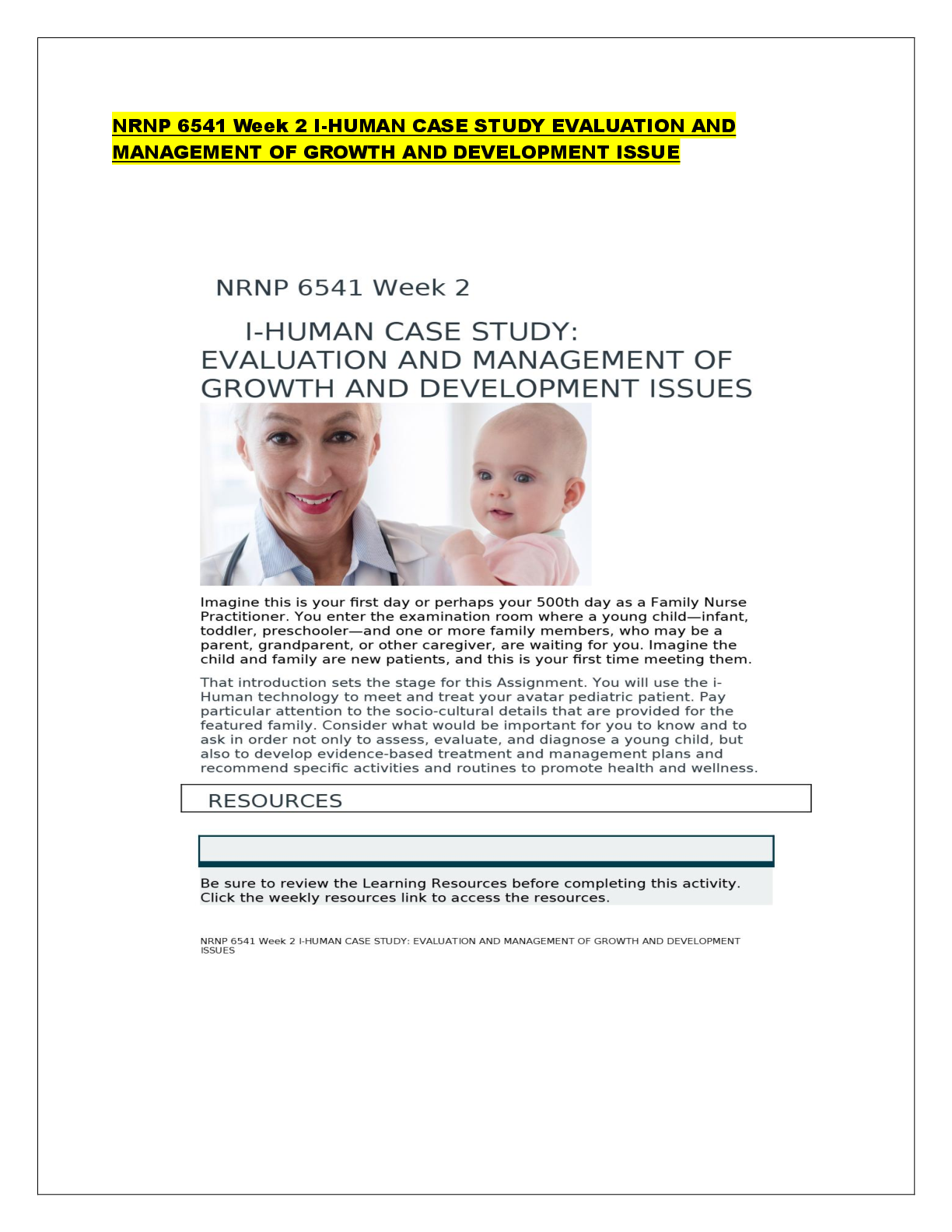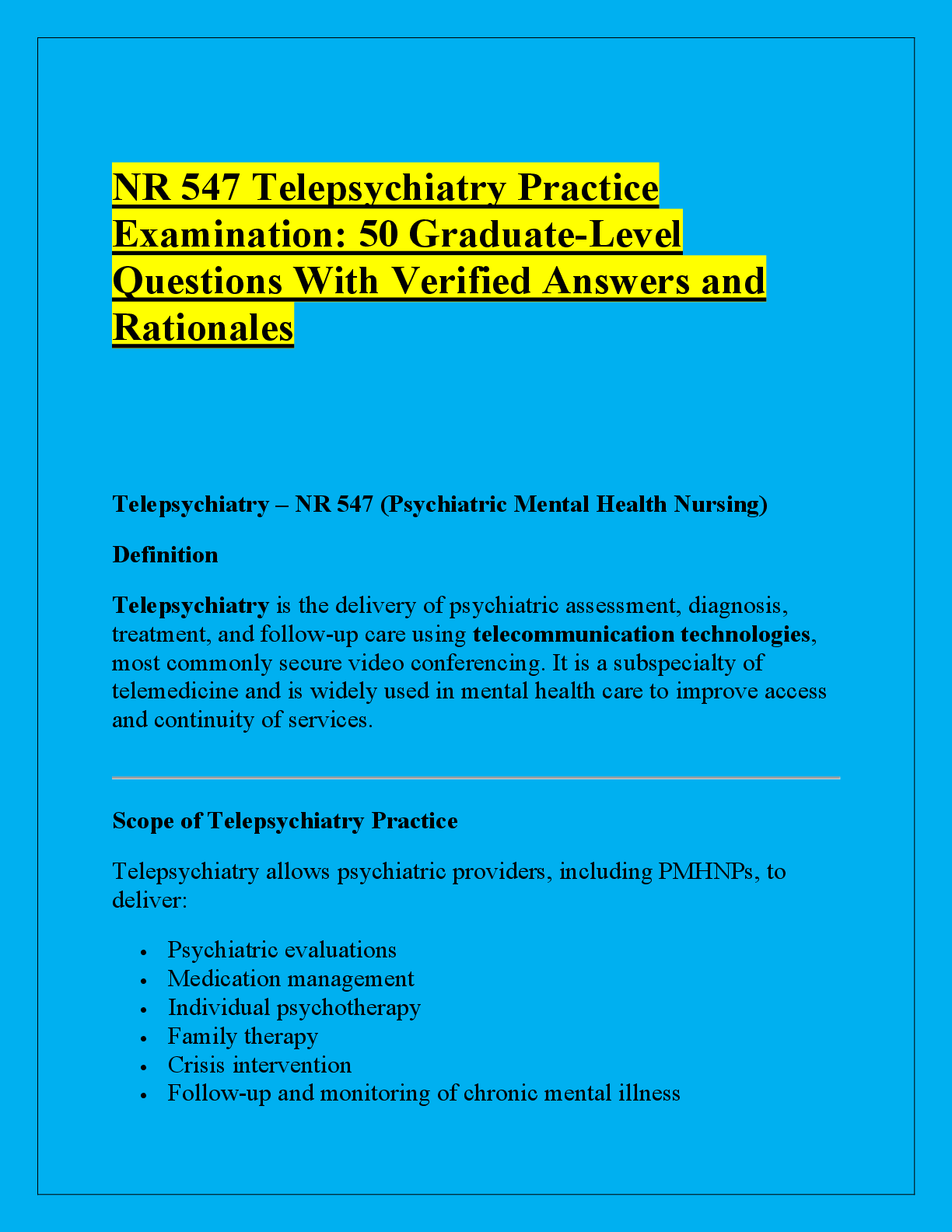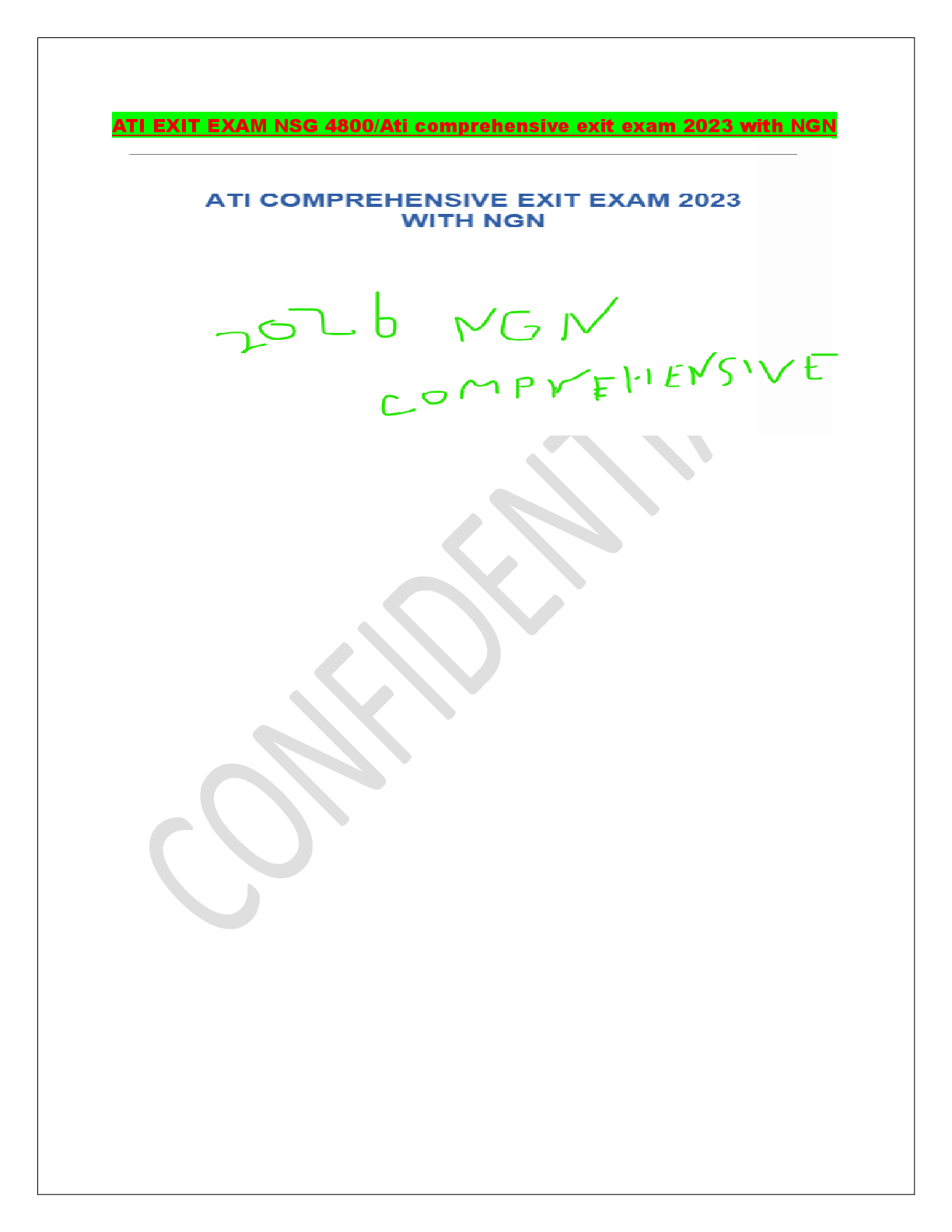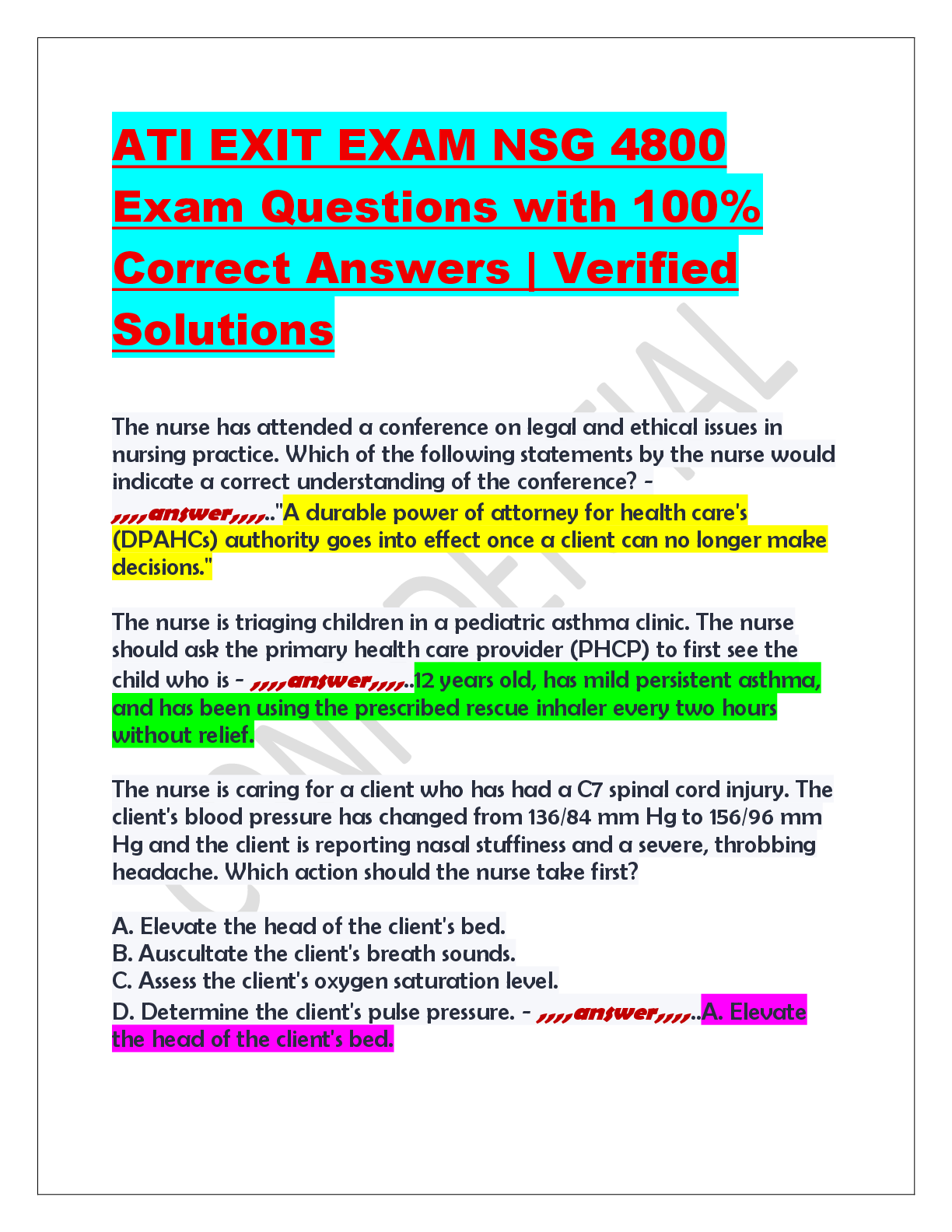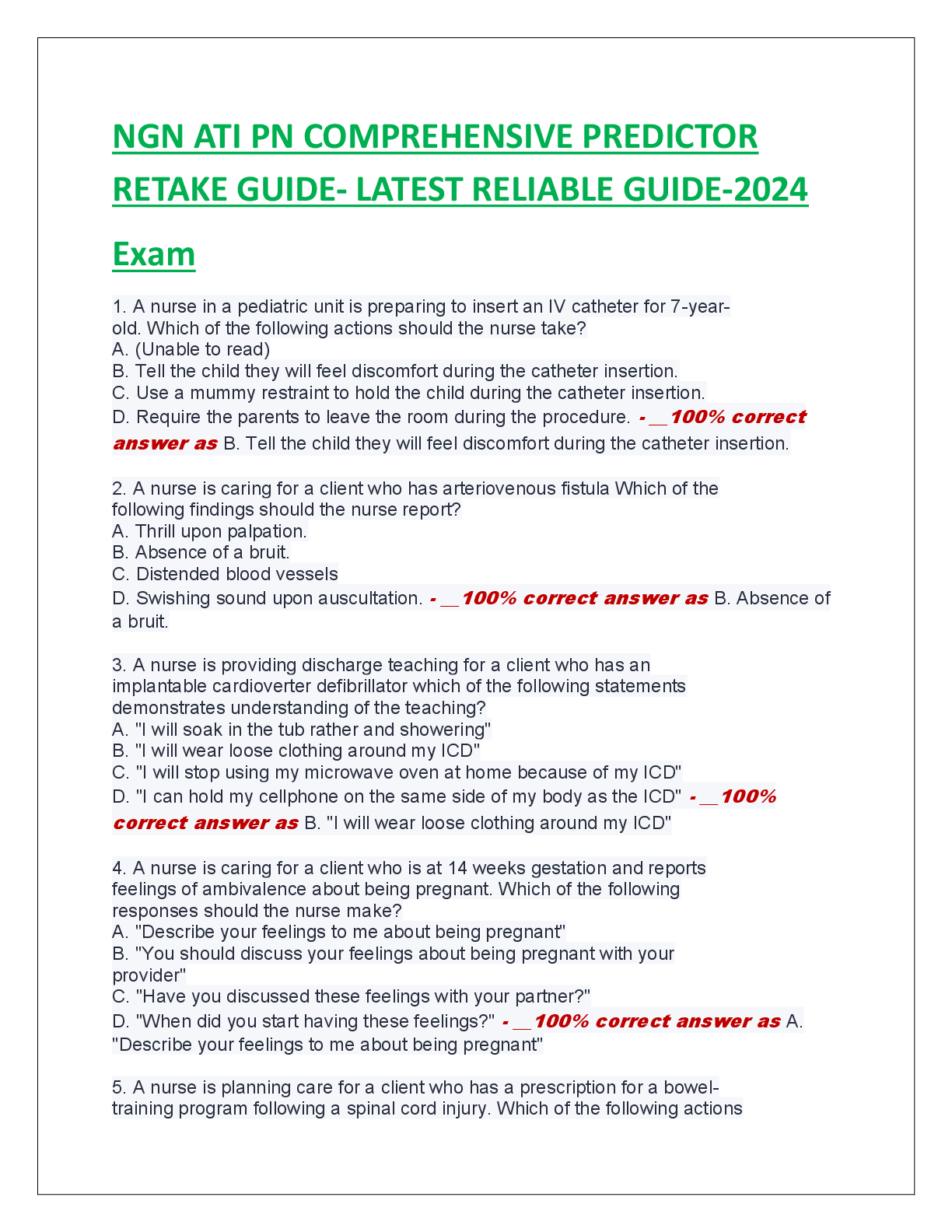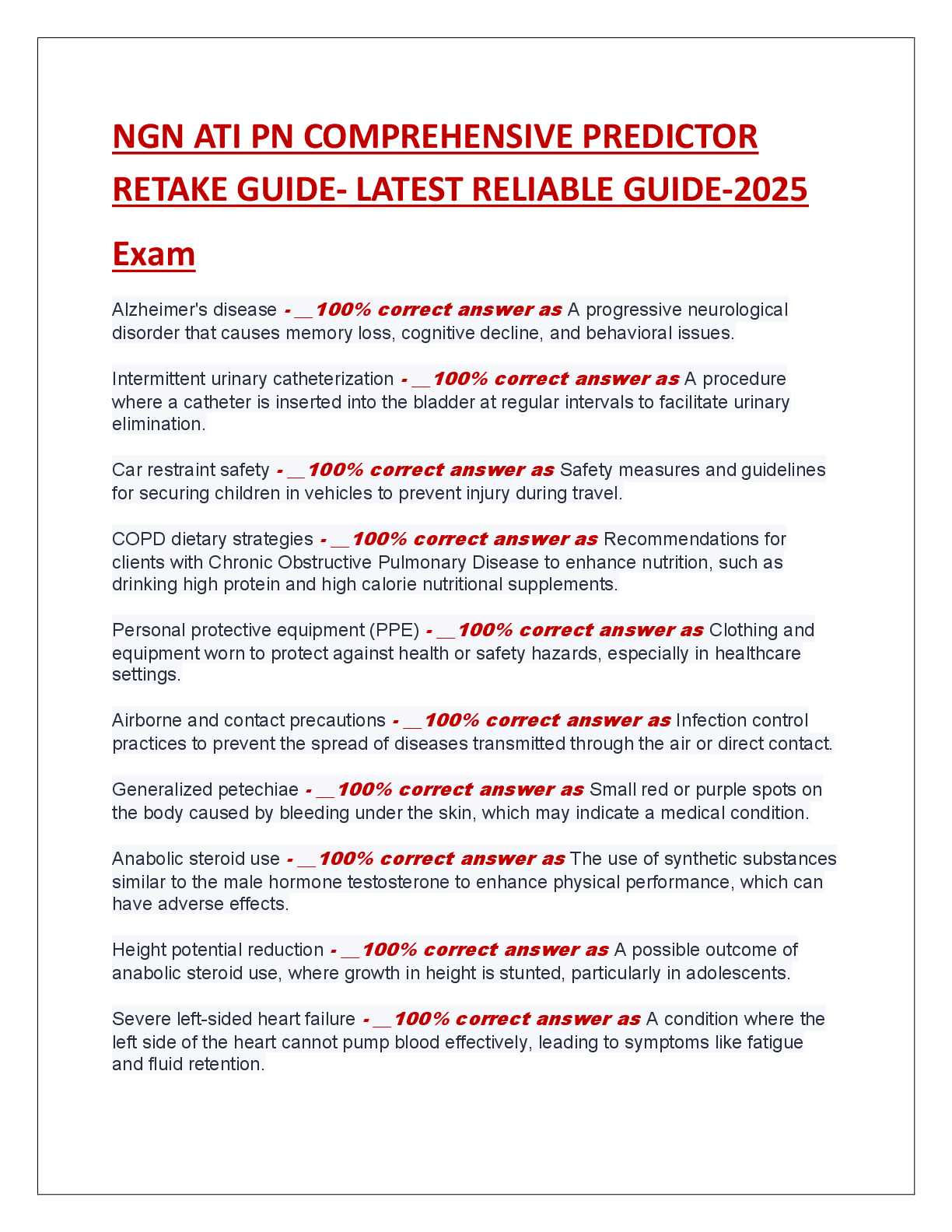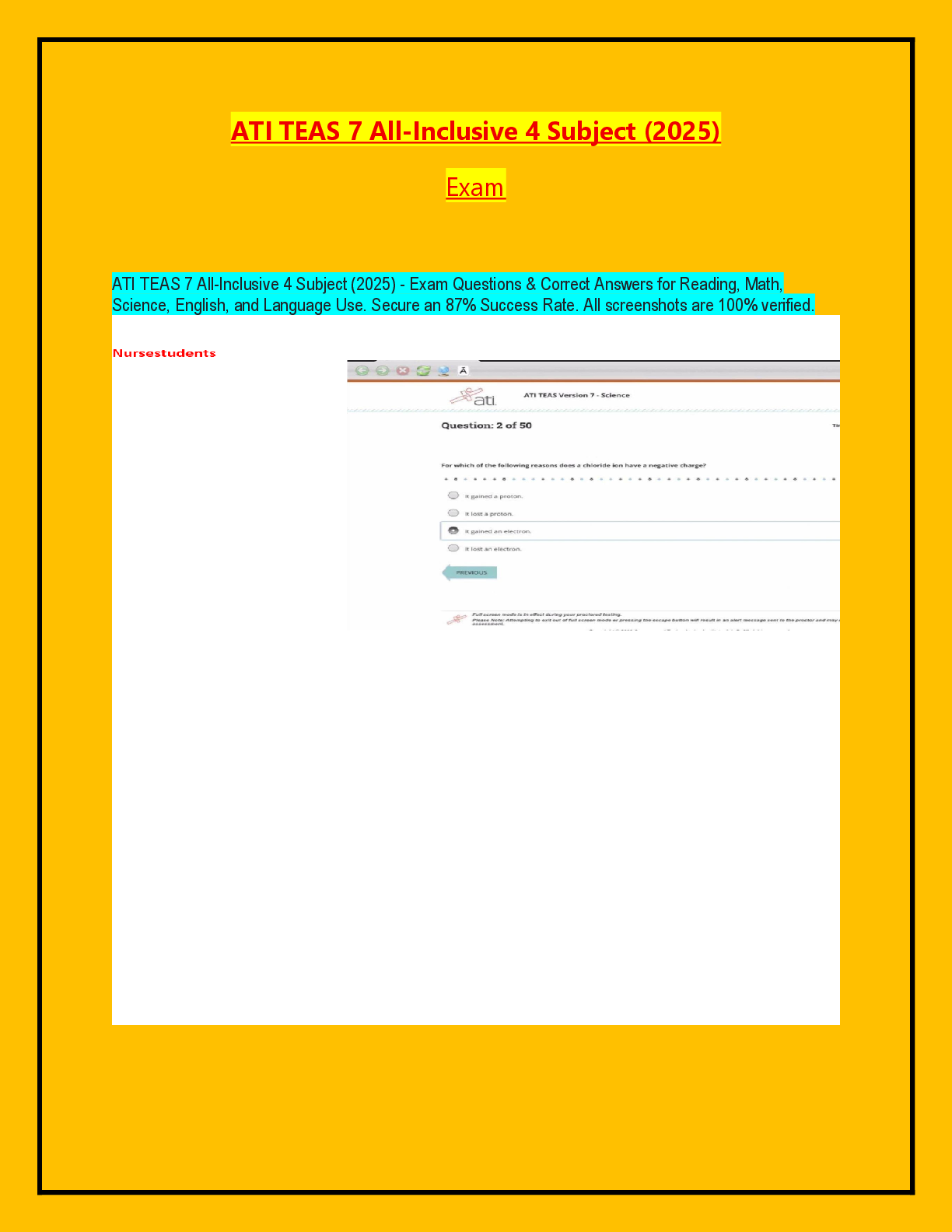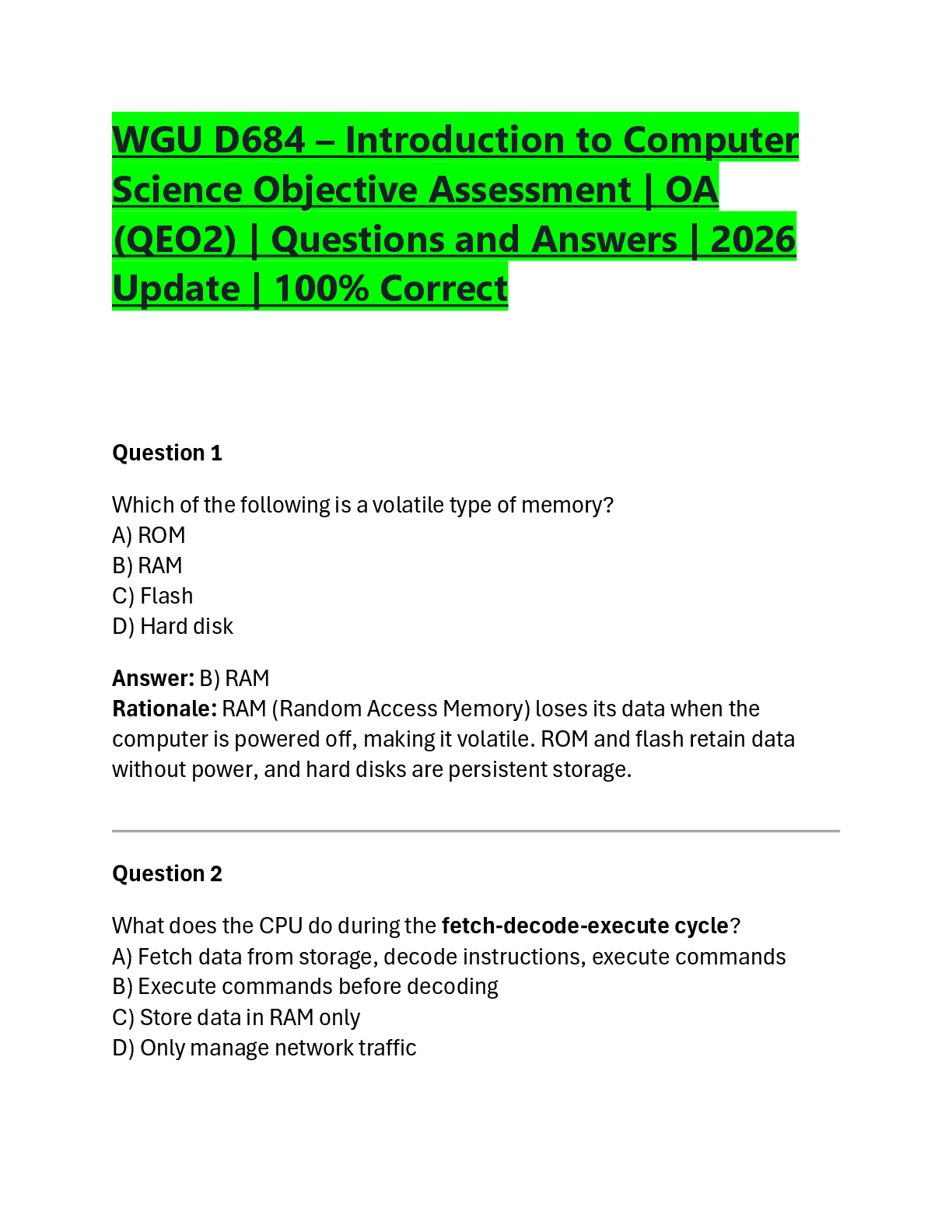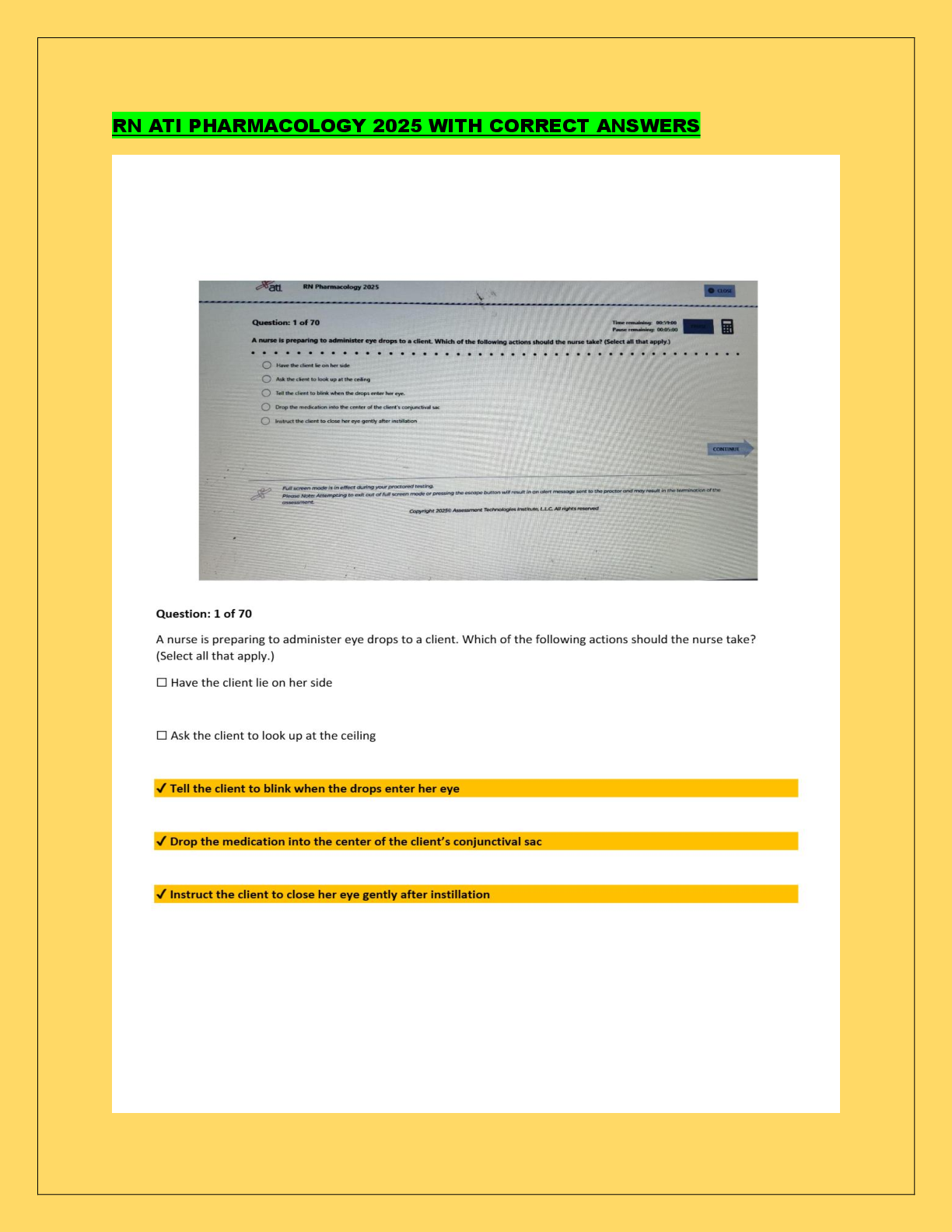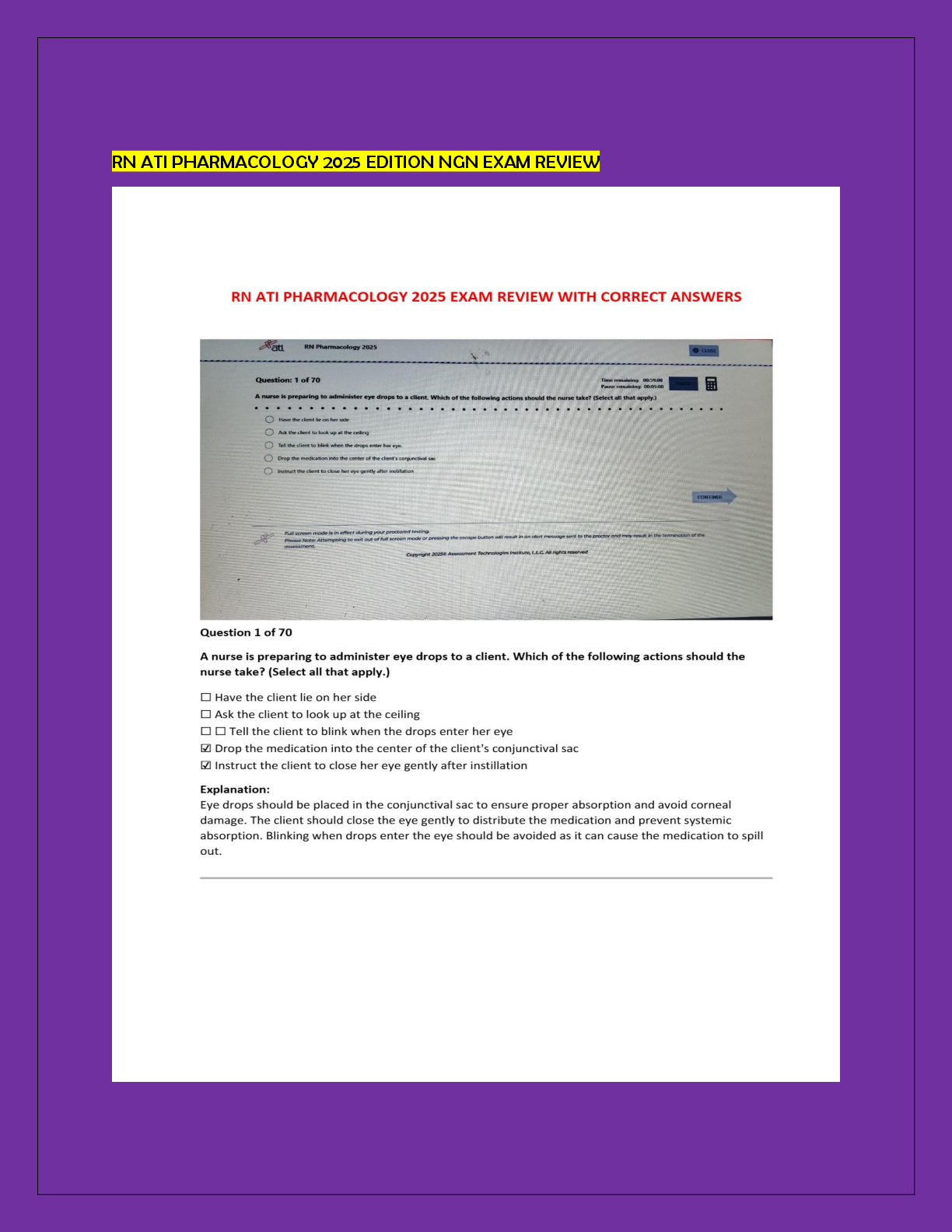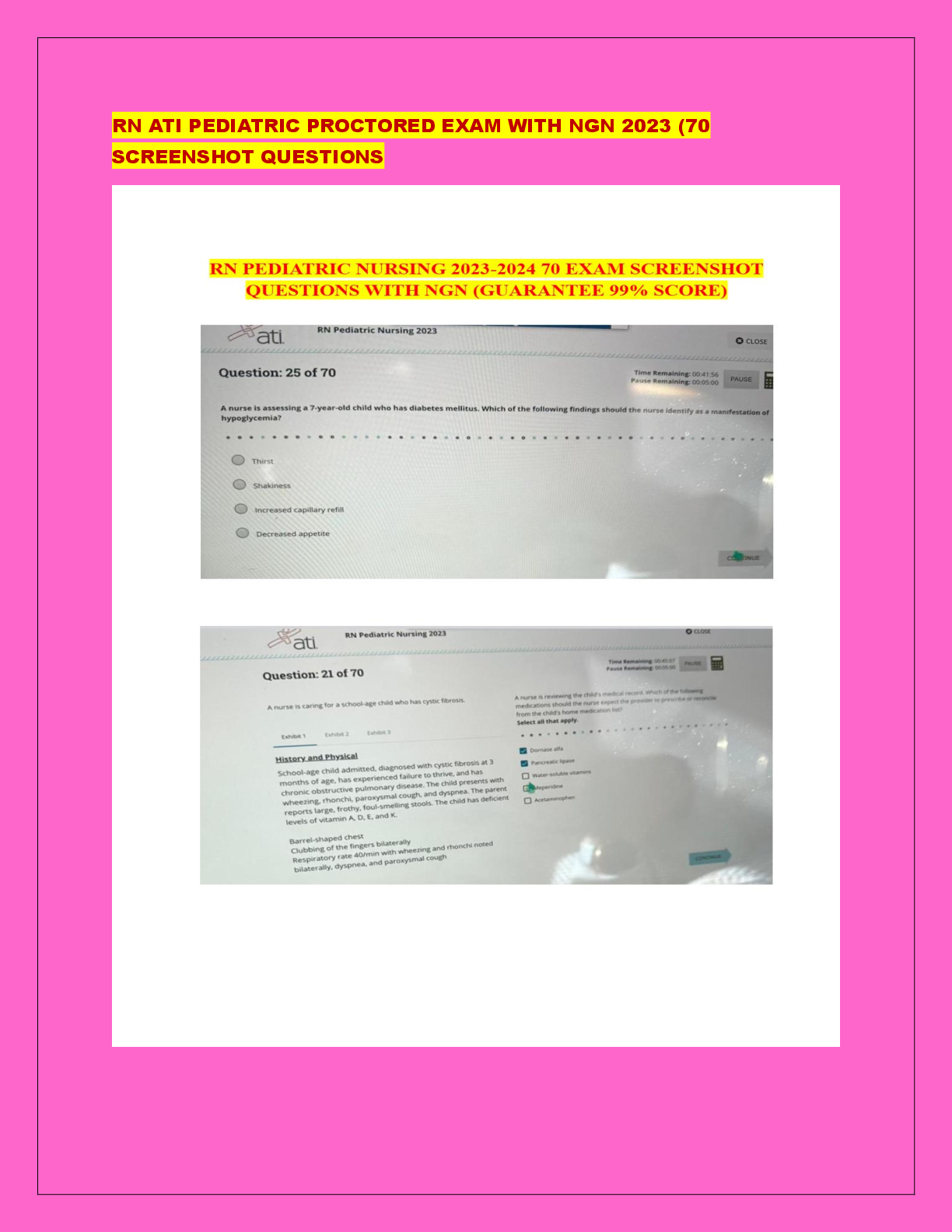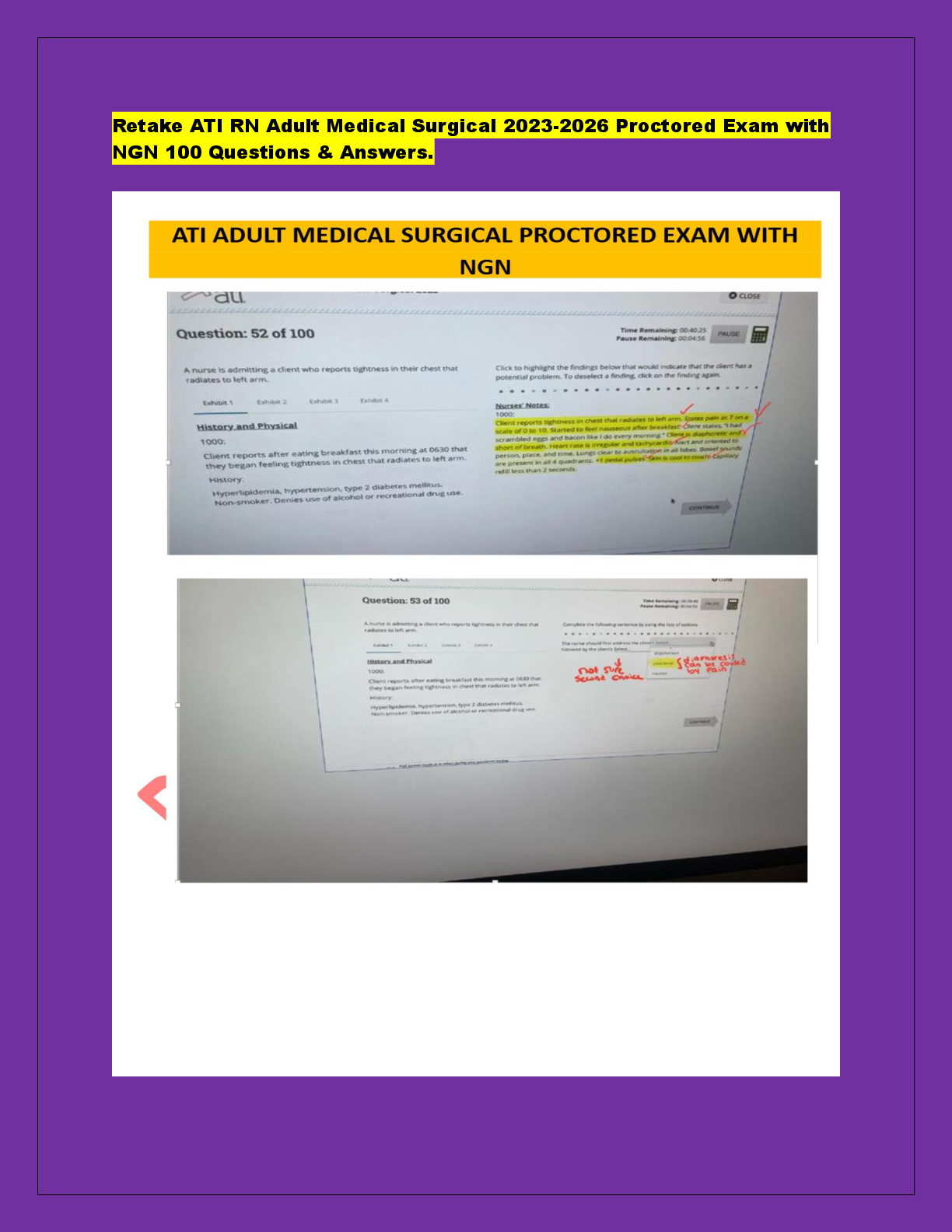NURSING ATIATI MATERNAL NEWBORN PROCTORED EXAM
Document Content and Description Below
ATI MATERNAL NEWBORN PROCTORED EXAM 1. The nurse is preparing a patient for surgery. Which goal is a priority for assessing the patient before surgery? a. Plan for care after the procedure. b. Est ... ablish a patient’s baseline of normal function. c. Educate the patient and family about the procedure. d. Gather appropriate equipment for the patient’s needs. ANS: B The goal of the preoperative assessment is to identify a patient’s normal preoperative function and the presence of any risks to recognize, prevent, and minimize possible postoperative complications. Gathering appropriate equipment, planning care, and educating the patient and family are all important interventions that must be provided for the surgical patient; they are part of the nursing process but are not the priority reason/goal for completing an assessment of the surgical patient. 2. The nurse is completing a medication history for the surgical patient in preadmission testing. Which medication should the nurse instruct the patient to hold (discontinue) in preparation for surgery according to protocol? a. Warfarin b. Vitamin C c. Prednisone d. Acetaminophen ANS: A Medications such as warfarin or aspirin alter normal clotting factors and thus increase the risk of hemorrhaging. Discontinue at least 48 hours before surgery. Acetaminophen is a pain reliever that has no special implications for surgery. Vitamin C actually assists in wound healing and has no special implications for surgery. Prednisone is a corticosteroid, and dosages are often temporarily increased rather than held. 3. The nurse is prescreening a surgical patient in the preadmission testing unit. The medication history indicates that the patient is currently taking an anticoagulant. Which action should the nurse take when consulting with the health care provider? a. Ask for a radiological examination of the chest. b. Ask for an international normalized ratio (INR). c. Ask for a blood urea nitrogen (BUN). d. Ask for a serum sodium (Na). ANS: B INR, PT (prothrombin time), APTT (activated partial thromboplastin time), and platelet counts reveal the clotting ability of the blood. Anticoagulants can be utilized for different conditions, but its action is to increase the time it takes for the blood to clot. This action can put the surgical patient at risk for bleeding tendencies. Typically, if at all possible, this medication is held several days before a surgical procedure to decrease this risk. Chest x-ray, BUN, and Na are diagnostic screening tools for surgery but are not specific to anticoagulants. 4. The nurse is encouraging the postoperative patient to utilize diaphragmatic breathing. Which priority goal is the nurse trying to achieve? a. Manage pain b. Prevent atelectasis c. Reduce healing time d. Decrease thrombus formation ANS: B After surgery, patients may have reduced lung volume and may require greater effort to cough and deep breathe; inadequate lung expansion can lead [Show More]
Last updated: 3 years ago
Preview 1 out of 26 pages

Buy this document to get the full access instantly
Instant Download Access after purchase
Buy NowInstant download
We Accept:

Reviews( 0 )
$6.50
Can't find what you want? Try our AI powered Search
Document information
Connected school, study & course
About the document
Uploaded On
Jul 29, 2022
Number of pages
26
Written in
All
Additional information
This document has been written for:
Uploaded
Jul 29, 2022
Downloads
0
Views
100


